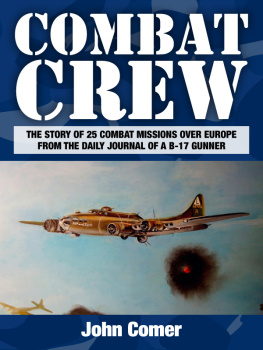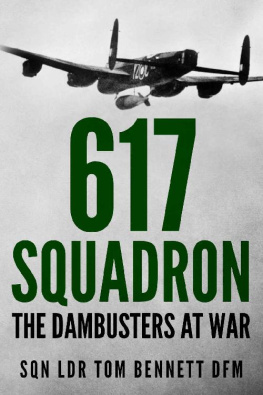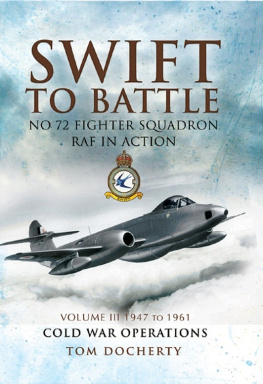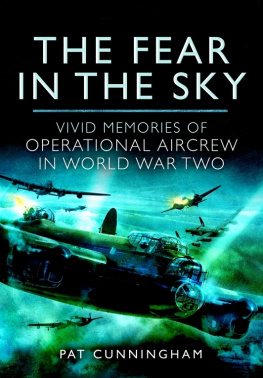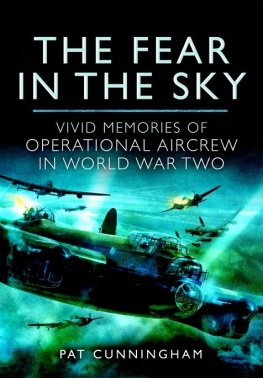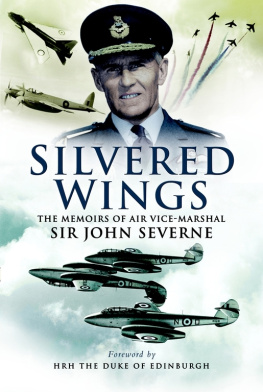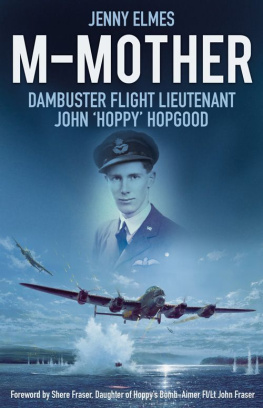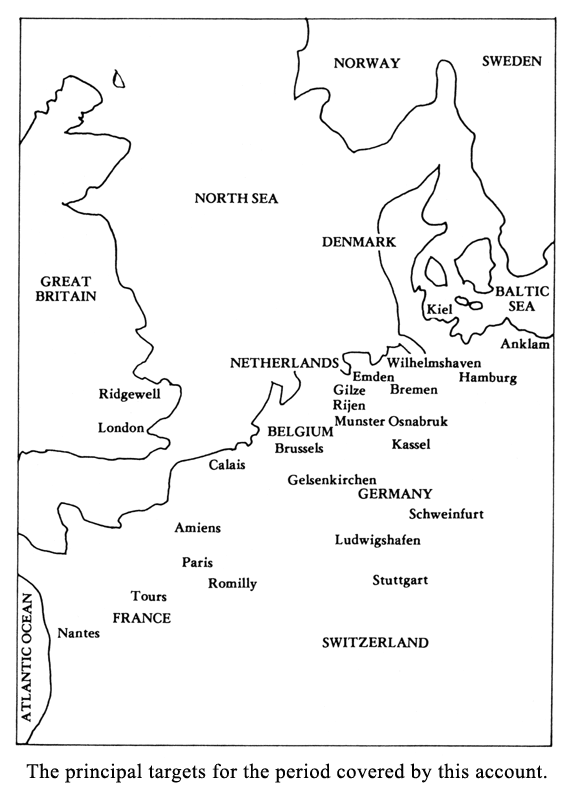Combat Crew Is Dedicated to the Memory of
James Counce
Hardin County, Tenn.
K.I.A. Jan 11, 1944
George Balmore
Bronx, N.Y.
K.I.A. Jan. 11, 1944
Herbert Carqueville
Chicago, Ill.
M.I.A. Oct. 9, 1943
Raymond Legg
Anderson, Ind.
K.I.A.
And to the Memory of All the Men
Who Gave Their Lives
in the Air War Over Europe
That the Rest of Us
Might Continue to Live in Freedom
Preface
The ultimate objective of Combat Crew is to make the combat missions come alive for readers of this book. In particular I want the wives, the sons, the daughters, and the grandchildren of the participants to feel that they are experiencing the extreme cold, the constant dangers, and the traumatic events that were common to all the men who manned the Flying Fortresses in the high thin air over the European Continent. To the extent possible my purpose is to take the reader along with us on the combat missions.
This account tells how one combat crew handled the boredom and monotony of barracks life, all the while sweating out the missions as the air battles unfolded. Every crew was different, reflecting the discipline desired by the pilot. However, I flew with thirteen air crews and found that all experienced crews were far more alike than different. The well-researched documentary books about this period may leave the impression that all of the missions were life-and-death struggles. It was not like that: each crew had some very rough missions and some easy ones. Often the accounts of the air battles over Europe are concerned with the commanders and the generals and their agonizing decisions. Again, it was not like that for us: We knew nothing about where we were going or why until two or three hours before takeoff. Once in the air we merely followed the formation, not being concerned about tactics.
What happened to Gleichaufs Crew was much like the experiences of men in other crews who succeeded in completing their quota of missions. Each crew could see only part of the action within its range of vision. When our crew had a rough go, sometimes crews in another part of the same battle had it easy. And even on the missions we called milk runs, almost always some unlucky crews were shot down. Death was never more than a few feet or inches from the men in the Flying Fortresses.
Foreword
As we approached the site where Ridgewell Airdrome once stood I was overcome with memories. It was June 1972. All at once I was transported back three decades in time. I could hear the raucous roar of Flying Fortress engines revving up for takeoff in the damp predawn cold of an English morning. I could smell that mixture of oil and gasoline that filled the air when engines coughed and started. I could feel again the vibrations of those overloaded aircraft struggling to escape the runway and lift up over the mists. I recalled that uncomfortable feel of an oxygen mask fitted tightly against my face. I remembered the hours I spent recalculating the odds of surviving and the daily realization that they were not good.
Suddenly I shivered despite the warmth of the summer day. I could not shake off the chill of the past. Was this return to Ridgewell going to be a mistake? One by one I recalled the faces of my crew a group of young men from diverse locales and backgrounds, thrown together by chance and placed under intense pressure. We were such ordinary men from whom the extraordinary was demanded. We were half-trained and woefully inexperienced. Most of our men had been in military service barely a year. We were expected to face the fury of Germanys superbly trained and experienced Luftwaffe and survive. Some of us did. During those months together we formed bonds of friendship I have never experienced before or since.
We were getting closer and I strained to catch a glimpse of something familiar anything that would confirm that I had once been a part of this place. Ridgewell had been home, prison, and refuge the center of my world for so many months. I squinted ahead, secretly hoping for rain, but there was none. That seemed so strange! Ridgewell without that eternal drizzle and everlasting mud? But that week England played a trick on my memory. The sun made daily appearances and the sky remained uncharacteristically free of moisture. Then it happened! About a hundred yards from the site of the base a gentle drizzle began to fall from skies that up to that moment had shown no hint of rain. It was eerie, as if it had been staged just for me. I was tempted to look upward and say, Thank you. And I knew I was right in returning to Ridgewell.
Then I was jolted back to reality. The site had long since returned to grain fields. Two old hangars were still standing, but now they were filled with farm machinery. They had traded airplanes for tractors! Part of me knew this was as it should be. Another part reached back through the years remembering how those hangars were once alive with men and Flying Fortresses needing major repairs. I wanted to regain for a few moments the experiences that could be relived only by those men who flew from this field in that long ago time of war. I stood there silently in the soft rain for a long time, remembering.
My wife and two close friends were with me, but they could not participate in my nostalgia. Nor did they try. To me, it represented the most intensely lived year of my life. To me, this was ground as hallowed as Lincolns Gettysburg. Although I flew out of other combat airfields far distant from England, none was burned as deeply into my memory as Ridgewell. It was from here that I had the first traumatic shock of combat. It was from here that so many of my friends, some of the finest men I have ever known, began their last flight.
Prologue
November 24, 1942
A thousand men were assembled on the parade ground at Sheppard Field, Texas, on that November day, just eleven months after Pearl Harbor. A dapper Major strode to an elevated speakers stand. I will remember him as long as I live. The man was a spellbinder, a military pitchman with superb talents. I listened in hypnotic fascination as he described the adventurous life of an aerial gunner. Carried away by his fiery enthusiasm, I could picture myself holding off a swarm of Japanese Zeroes! With exciting fervor the speaker challenged those of us who had an extra share of guts. Some might, he hinted, be accepted for aerial gunnery. The Major concluded his remarks: Those of you who want to escape menial assignments for the next three or four years, and live a life of excitement, fall out to my right for physical examinations.
About fifty of us, whose judgment at the moment was questionable, lined up as directed. An hour later I was still sitting in the silence of the reception room at the base hospital awaiting my turn.
The hypnotic spell was beginning to wear off. Men were leaving quietly until there were only a few of us left. What the hell was I doing there? Did I really want to trade a safe aircraft mechanics job for active combat? Since when had I developed an extra share of guts? Slowly rational thinking returned. I got up and began easing out, and was ten feet from the exit when a hall door opened.
Comer!
Here, I responded automatically.
That room on the left. Strip down; theyll be with you in a few minutes.
How often the timing of a trivial incident shapes our lives. If that orderly had been five seconds later I would have been gone, and the war for me would have been a vastly different story.
I suddenly remembered the crushing blow ten years earlier when an unexpected visual depth perception change abruptly ended my hoped-for aerial career at the Air Corps Flying Detachment at Brooks Field. I had to conclude that the defect would still be there and I was sure the medical exam would be the same as for pilots.
Next page
